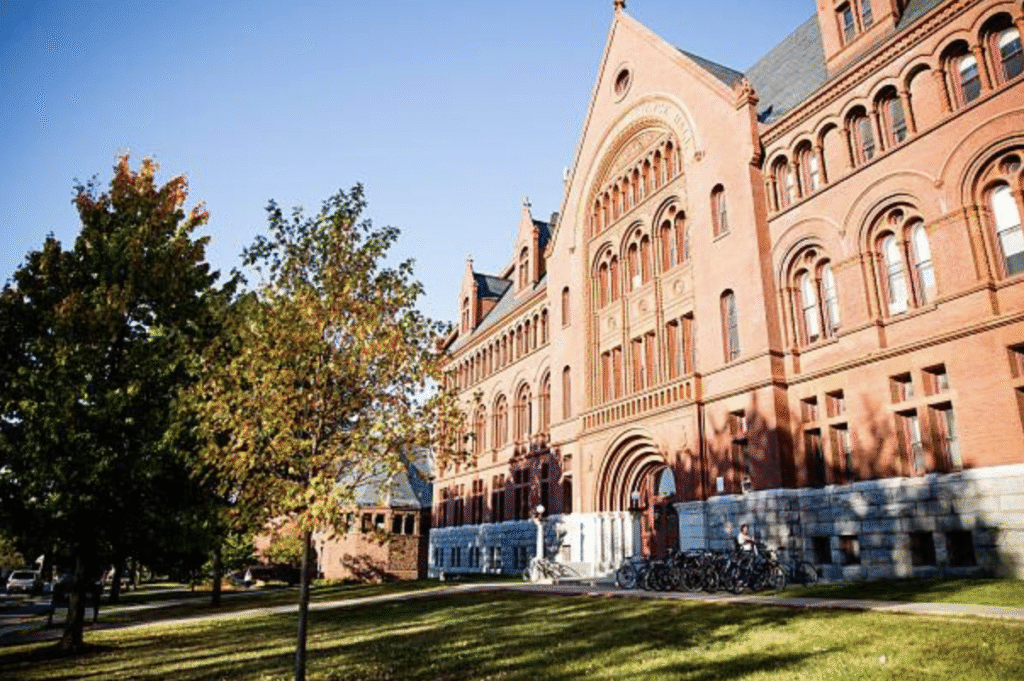Author: Bryan Lin
College Tuition has risen a staggering amount in recent years, going from about $5,000 a year to $12,000 at the in-state level alone. With that crazy jump, it isn’t uncommon for people to wonder why has tuition inflated so much? Common assumptions fall into a few categories including “administrative bloat, overbuilding of campus amenities, a model dependent on high-wage labor, and the easy availability of subsidized student loans”. While these assumptions aren’t incorrect, the real root of the problem stems deeper.
In the early 1980s, tuition costs ranged from around $10,000 per year for a complete four-year program. Back then, you were paying for basic instruction and standard dormitories, not the recreational facilities and luxury amenities colleges now use to attract prospective students. Throughout the following years, higher education would transform from a public good to a private commodity, following a clear national trajectory that reveals how priority shifts fundamentally altered college affordability. Public state universities across America were tuition-free from the early 1800s to the late 1960s. This was due to the establishment of the Morrill Act of 1862, which instituted a system of low-cost land grant colleges. This all changed in the 1980s. The federal spending on higher education was slashed by 25 percent between 1980 and 1985, cutting $594 million in student assistance.
This massive funding cut shifted how higher education is paid for, forcing universities to replace lost public dollars with private student payments. Essentially, the percentage of a student’s tuition that the government used to cover, now had to be covered by the students and their families. This has resulted in “at least 70 percent of the colleges were unaffordable for lower-income students” even after taking in account federal student loans. A 2017 study by the Institute for Higher Education Policy (IHEP) titled “Limited Means, Limited Options: College Remains Unaffordable for Many Americans” revealed that 95 percent of American colleges are too expensive for the majority of low-income students. The IHEP analysis assumes families should save 10 percent of their income in the 10 years before college, while students should be able to work 10 hours per week during full-time enrollment. Even under these assumptions, educational access in America is still extremely limited to low-medium income households. Even institutions specifically designed to serve as affordable alternatives have started to fall short. IHEP’s analysis of state flagship universities, which are traditionally viewed as the most accessible but still high-quality option, found that only six flagship institutions nationwide remain affordable for students from low- or middle-income backgrounds.
The transformation from higher education as a public good to a luxury commodity has fundamentally altered the American social contract.
Works Cited
Cooper, Preston. “A New Study Investigates Why College Tuition Is So Expensive.” Forbes, 31 Aug. 2020, www.forbes.com/sites/prestoncooper2/2020/08/31/a-new-study-investigates-why-college-tuition-is-so-expensive/. Accessed 1 Sept. 2025.
“Limited Means, Limited Options: College Remains Unaffordable for Many Americans.” National Association of Student Financial Aid Administrators, www.nasfaa.org/news-item/11623/Report_Low-Income_Students_Cannot_Afford_95_Percent_of_Colleges. Accessed 8 Sept. 2025.
“See 20 Years of Tuition Growth at National Universities.” U.S. News & World Report, www.usnews.com/education/best-colleges/paying-for-college/articles/see-20-years-of-tuition-growth-at-national-universities. Accessed 1 Sept. 2025.
“Why Is the Cost of College Rising So Fast?” State Science & Technology Institute, ssti.org/blog/why-cost-college-rising-so-fast. Accessed 1 Sept. 2025.

